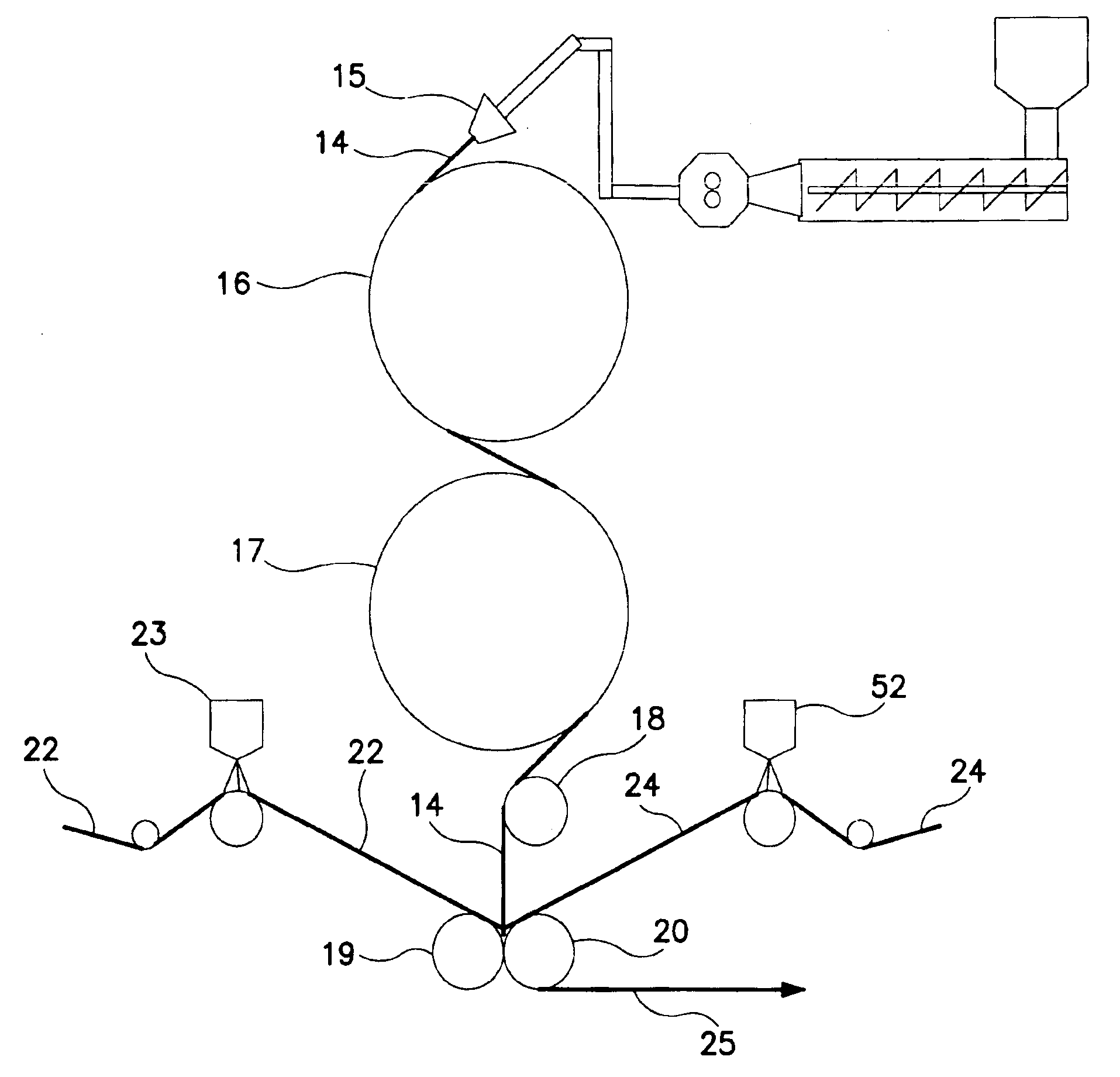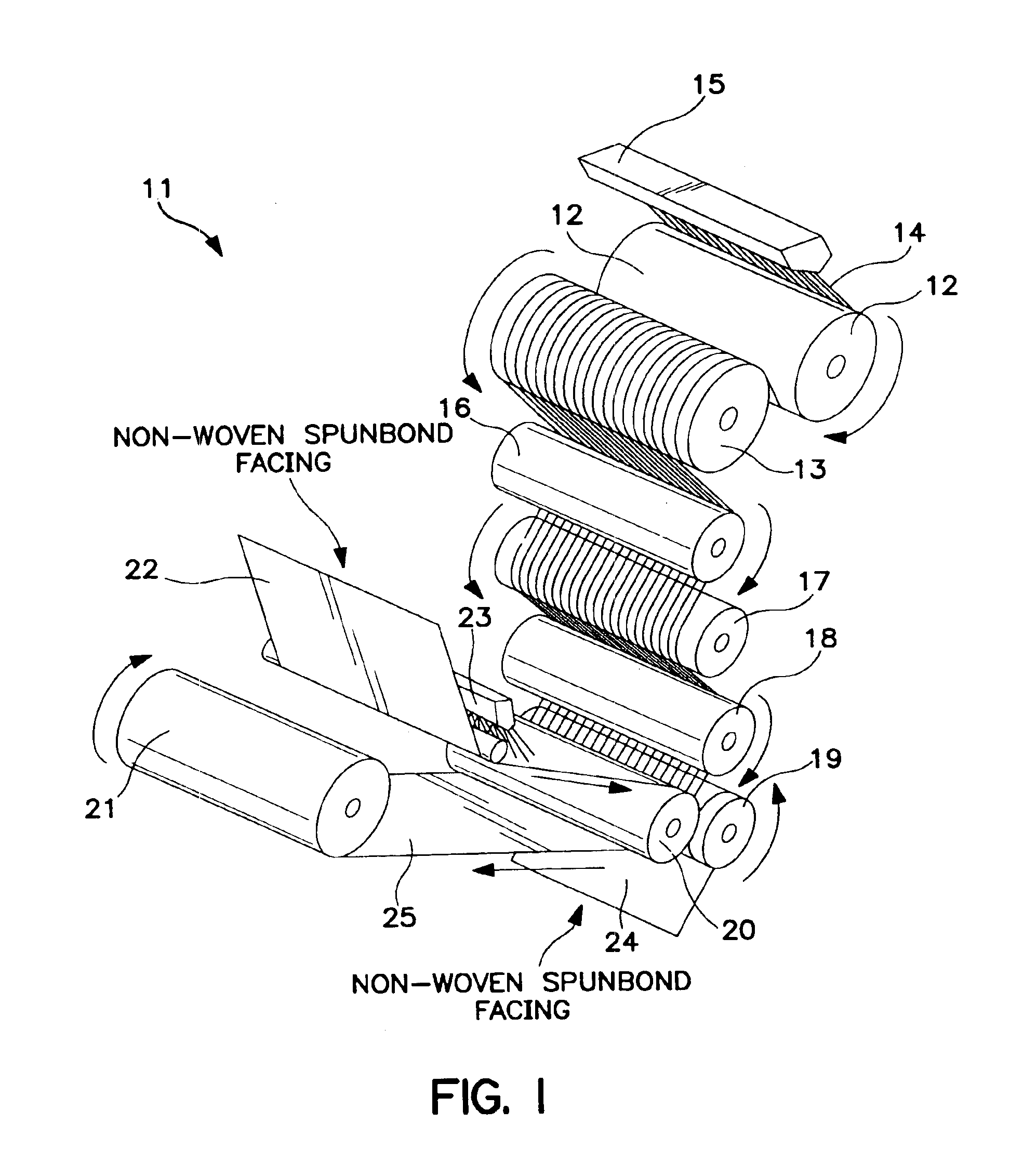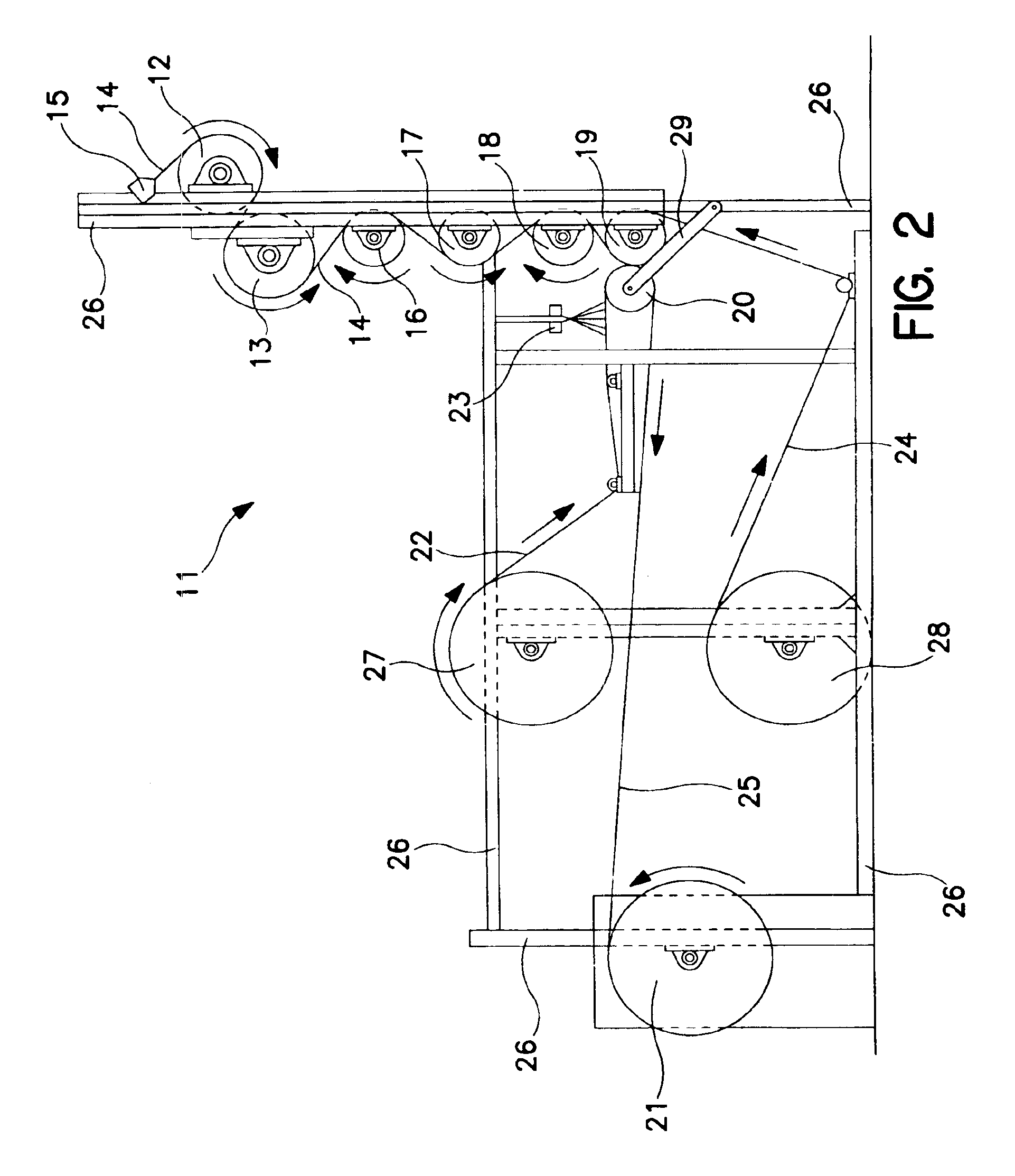Method and apparatus for producing laminated articles
a technology of laminated articles and methods, applied in the direction of layered products, chemistry apparatus and processes, bandages, etc., can solve the problems of oriented processes that may require expensive post-extrusion equipment, and the gathering of elastic components
- Summary
- Abstract
- Description
- Claims
- Application Information
AI Technical Summary
Benefits of technology
Problems solved by technology
Method used
Image
Examples
example 1
[0124]A distinction between the products produced by the present vertical laminate process and the products produced by the aforementioned horizontal laminate process (such as disclosed in Wright), is the improved uniformity of the spacing between strands and the tension variability. For example, the average filament spacing between continuous filament strands in a laminate product formed by the present process is approximately 3 mm. On the other hand, the average filament spacing between continuous filament strands in a laminate product formed by the horizontal process disclosed in U.S. Pat. No. 5,385,775 to Wright was 4 mm to 5 mm.
example 2
[0125]Another characteristic of the continuous elastic filaments formed in the present process is the denier of such filaments. For examples, at 9 grams per square meter of elastic in the laminate nip during process which corresponds to 6.4 grams per die hole per minute, running at 1100 feet per minute, with a 5.2× stretch ratio and a 50% winder ratio, the denier at the first chill roll is equal to or greater than 900; the denier at the nip is equal to or greater than 173; and the denier at the winder is equal to or greater than 347.
example 3
[0126]At 11.5 grams per square meter of elastic in the laminate nip during process which corresponds to 8.2 grams per die hole per minute, running at 1100 feet per minute, with a 5.2× stretch ratio and a 50% winder ratio, the denier at the first chill roll is equal to or greater than 1140; the denier at the nip is equal to or greater than 220; and the denier at the winder is equal to or greater than 440.
PUM
| Property | Measurement | Unit |
|---|---|---|
| Temperature | aaaaa | aaaaa |
| Temperature | aaaaa | aaaaa |
| Temperature | aaaaa | aaaaa |
Abstract
Description
Claims
Application Information
 Login to View More
Login to View More - R&D
- Intellectual Property
- Life Sciences
- Materials
- Tech Scout
- Unparalleled Data Quality
- Higher Quality Content
- 60% Fewer Hallucinations
Browse by: Latest US Patents, China's latest patents, Technical Efficacy Thesaurus, Application Domain, Technology Topic, Popular Technical Reports.
© 2025 PatSnap. All rights reserved.Legal|Privacy policy|Modern Slavery Act Transparency Statement|Sitemap|About US| Contact US: help@patsnap.com



